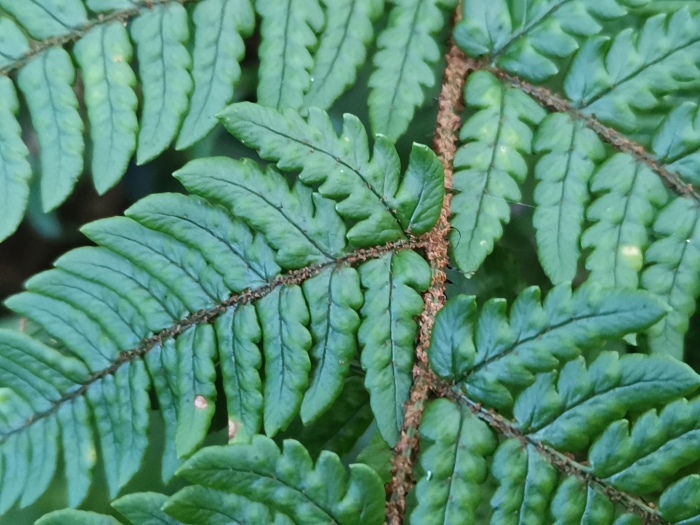Bisset’s Wood Fern
(Dryopteris bissetiana)
Bisset’s Wood Fern (Dryopteris bissetiana)
/
/

harum.koh
CC BY-SA 4.0
Image By:
harum.koh
Recorded By:
Copyright:
CC BY-SA 4.0
Copyright Notice:
Photo by: harum.koh | License Type: CC BY-SA 4.0 | License URL: http://creativecommons.org/licenses/by-sa/4.0/ | Rights Holder: harum.koh | Publisher: iNaturalist | Date Created: 2020-08-29T11:40:52-07:00 |

























Estimated Native Range
Summary
Dryopteris bissetiana, commonly known as Bisset’s Wood Fern, is a semi-evergreen fern native to the understory of temperate forests and shaded slopes in East Asia, including Japan, China, and Korea. It typically grows at a moderate rate to a height and width of 1.5-2.5 feet (0.46-0.76 meters), forming a lush, dense clump of arching, lance-shaped fronds. The fronds are a vibrant green color, contributing to the plant’s visual appeal throughout the growing season. Bisset’s Wood Fern is valued for its hardiness and the textural contrast it provides in shaded garden areas.
This fern is an excellent choice for woodland gardens, shade gardens, and naturalized areas where it can form a verdant ground cover. It is also suitable for border planting in shaded locations. Bisset’s Wood Fern thrives in part shade to full shade and prefers consistently moist, well-drained soils rich in organic matter. It is relatively low maintenance, requiring minimal watering once established, except in very dry conditions. While it is generally disease-resistant, it can occasionally suffer from fungal infections if conditions are too wet. Gardeners should be aware that this fern does not tolerate drought or excessive sunlight.CC BY-SA 4.0
This fern is an excellent choice for woodland gardens, shade gardens, and naturalized areas where it can form a verdant ground cover. It is also suitable for border planting in shaded locations. Bisset’s Wood Fern thrives in part shade to full shade and prefers consistently moist, well-drained soils rich in organic matter. It is relatively low maintenance, requiring minimal watering once established, except in very dry conditions. While it is generally disease-resistant, it can occasionally suffer from fungal infections if conditions are too wet. Gardeners should be aware that this fern does not tolerate drought or excessive sunlight.CC BY-SA 4.0
Plant Description
- Plant Type: Fern
- Height: 1.5-2.5 feet
- Width: 1.5-2 feet
- Growth Rate: Moderate
- Flower Color: N/A
- Flowering Season: Non-Flowering
- Leaf Retention: Evergreen
Growth Requirements
- Sun: Part Shade, Full Shade
- Water: Low
- Drainage: Medium
Common Uses
Border Plant, Low Maintenance, Potted Plant
Natural Habitat
Native to the understory of temperate forests and shaded slopes in East Asia
Other Names
Common Names: Bisset’s Wood Fern
Scientific Names: , Dryopteris bissetiana, Aspidium setosum, Dryopteris setosa, Dryopteris sinobissetiana, Dryopteris thunbergii, Dryopteris varia subsp. setosa, Dryopteris varia var. setosa, Nephrodium bissetianum, Polypodium setosum
GBIF Accepted Name: